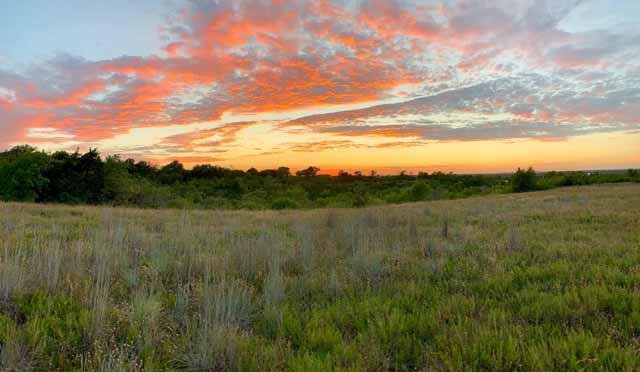Prairie Notes #164 - The Magical Moths of Tandy Hills
Prairie Notes are monthly photo/journal observations from Tandy Hills Natural Area by Founder/Director, Don Young. They include field reports, flora and fauna sightings, and more, mixed with a scoop of dry humor and a bit of philosophy.
They are available free to all who get on the FOTHNA email list.
The Magical Moths of Tandy Hills
Prairie Notes #164
August 1, 2020
01) The Magical Moths of Tandy Hills
02) Field Report - July
03) Kids & Family Nature Fun (Indoors & Out)
04) New Species - July
05) Barn Swallows: Part 2
06) Front Page NEWS
07) PrairieSky / StarParty News
08) Prairie Bookshelf
09) Prairie Proverb - Walt Whitman
01) The Magical Moths of Tandy HIlls
Happy National Moth Week to you, too!
You probably didn't know but, July 18 - 26 was National Moth Week. You also may not know that there are 231 species (and counting) of moths and butterflies at Tandy Hills. Both are members of the Lepidoptera order, but moths make up the vast majority with 176 species currently documented.
Butterflies have a better rep than moths since they don’t eat holes in your clothes or your devour your crops. But moths are fascinating insects and a key link in the chain of life as pollinators and food sources for birds and other critters. Some moths, such as the White-lined Sphinx Moth and Hawk Moths are masters of disguise, fooling predators into thinking they are birds. Others, like the Yucca Moth, share a symbiotic relationship that goes back some 40 million years. There are also some strikingly beautiful species of moths coming in a great variety of shapes and colors.
Moths evolved long before butterflies, with some fossils dated at 190 million years old. Today, there are an estimated 160,000 species worldwide, many yet to be described or understood. They are mostly nocturnal and attracted to lights which make them fun to track and document. Naturalists like, Sam Kieschnick, make a party out of setting up “mothing lights” and white backdrops to attract moths after dark. The results are often amazing.
So, how does one distinguish the difference between moths and butterflies. There are several ways but typically, butterflies have thin antennae with small balls at the end of their antennae. Moth antennae are usually feathery with no ball on the end.
I've selected below a handfull of the strange and beautiful moths that have been observed at Tandy Hills and documented on the iNaturalist website. This LINK will take you to a page showing all 176 species and their observations.
DY
02) Field Report - July
It was a hot and dry July but the prairie and woodlands are healthy and inviting, especially in the evening hours. The grasses and fall bloomers are thick and vigorous. Do yourself a favor and explore the Tandy hills some evening and you may see amazing stuff like this:
03) Kids & Family Nature Fun (Indoors & Out)
Michael Smith is a local author, naturalist the cofounder of the Dallas–Fort Worth Herpetological Society. His monthly newsletter for young readers, Treefrog Times is a wonderful way to engage kids with nature. Check out the new July issue here:
https://jsdragons.files.wordpress.com/2020/07/treefrog-times-jul2020.pdf
04) New Species - July
Tandy Hills had visits in July from BRIT Research Botanist, Bob O'Kennon and TPWD Urban Wildlife Biologist, Sam Kieschnick. Don Young had 8. All total, 41 new species were recorded at Tandy Hills. That's amazing!
Sam set up at Tandy Hills during National Moth Week and ID'd 15 new species, including, four new moths. Bob recorded 14 new species, including, Whorled Milkeed (Asclepias verticillata), a new Milkweed species for Tandy Hills. The total species count as of July 31 is, 1393. See below, the full list for July and a few notable pics.
Aridland Cicada (Beameria venosa)
Big-headed Ground Beetle (Scarites subterraneus)
Citrus Flatid Planthopper (Metcalfa pruinosa)
Click Beetle (Conoderus lividus)
Clockweed (Oenothera lindheimeri)
Cobbler Moth (Condica sutor)
Cotton Fleahopper (Pseudatomoscelis seriatus)
Deadly Nightshade (Solanum interius)
Deer Mushrooms (Genus Pluteus)
Dirt-colored Seed Bug (Ptochiomera nodosa)
Eastern Black Nightshade (Solanum emulans)
Eastern Screech-Owl (Megascops asio)
Filbertworm Moth (Cydia latiferreana)
Flatid Planthopper (Ormenoides venusta)
Gall Midges (Polystepha globosa)
Glowworm Beetle (Distremocephalus texanus)
Grass-leaved Rush (Juncus marginatus)
Green Carpetweed (Mollugo verticillata)
Hackberry Blister Gall Psyllid (Pachypsylla celtidisvesicula)
Lace Bugs (Genus Gargaphia)
Plant Bug (Clivinema villosum)
Privet Leafhopper (Fieberiella florii)
Prostrate Sandmat (Euphorbia prostrata)
Rock Flax (Linum rupestre)
Slimseed Sandmat (Euphorbia stictospora)
Southern Cinnabar Polypore (Trametes coccinea)
Spongillaflies (Climacia areolaris)
Spotted Thyris Moth (Thyris maculata)
Swift Setwing (Dythemis velox)
Tomato (Solanum lycopersicum)
Twirler Moth (Calliprora sexstrigella)
Velvet Ants (Genus Timulla)
Wavy-lined and Southern Emeralds (Complex Synchlora aerata)
Western Grapeleaf Skeletonizer Moth (Harrisina metallica)
White Palpita Moth (Diaphania costata)
Whorled Milkweed (Asclepias verticillata)
05) Barn Swallows: Part 2
In 1963 when I was 12 years old, I went on a fishing trip to Lake Texoma with a friend and our Dads. The fishing was slow all day but we had fun bobbing around the lake in the bass boat. As sundown approached, we decided to head for the dock when, suddenly, my friends dad cranked up the engine and yelled at us to hold on tight and get ready to cast. Out ahead was a huge school of sand bass streaking silvery in the green waves backlit by the setting sun. They were moving so fast the speeding boat could barley keep up. For a breath-taking half hour we whip-sawed across the lake chasing that school of fish, casting as fast as we could as flopping fish filled the boat. It was the most mystical experience of my life to that point.
I experienced a similar mystical moment at Tandy Hills on July 18. Just as I was entering the trail I looked up to see a "swoop" of Barn Swallows swarming over the Iconic Meadow, scooping up insects in their acrobatic way. They zig-zagged all around me so close I could feel the wind from their wings. I stood watching as the feeding frenzy went on for a good half hour. Time seemed to stand still and I was trasported back to 1963 and that school of streaking fish. Here's a half minute video I shot to give you an idea of what it was like.
06) Front Page News
Guess who made the cover of the Summer 2020 issue of the Native Plant Society of Texas News? Lots of useful info in this issue, including a revised report on Broadcast Hill. I urge you to become a member of your local chapter. Here's a handy link to the Summer newsletter:
https://www.npsot.org/NPSOTNews/Newsletters/NPSOT_v38_03_20.pdf?fbclid=I...
Cover photo by, Don Young
07) PrairieSky / StarParty News
Tandy Hills star parties will remain on hiatus indefinitely BUT you can stargaze online, LIVE, with astronomers from the FW Astronomical Society. They typically do an online event that matches the dates previously scheduled for Tandy HIlls. Check it out their YouTube page for past and future events, HERE:
https://www.youtube.com/channel/UC3hci3-r2dVmLI6x7-JbI6A
Meanwhile, FWAS rep, pam Kloepheer, offers this backyard star-gazing guide for August:
"As we continue our visual star parties from our own backyards, remember that you can see a lot just by adapting your eyes to the darkness and, "looking up" and even more with any size pair of binoculars! Following Scorpius in the south, is the Teapot asterism in the large constellation Sagittarius. As with the outline of the scorpion, if you let your eyes adjust to the darkness, you will be able to see a lay out of stars that looks like a teapot. As you follow further east, you will come to Jupiter, which will be big and bright in the sky. With binoculars, you may be able to spot any of its four moons. Following Jupiter and much dimmer in brightness, you will see Saturn. The planets follow a path around the sun called the ecliptic. As the month progresses, you will also be able to observe red Mars following along on the same plane.
We had an unexpected surprise visitor in July - Comet NEOWISE! It was so named after a NASA space telescope discovered it, and was visible with binoculars in both the early morning and evening skies. In August, we can look forward to the Perseid Meteor shower, which will peak August 11/12. Your best chance of seeing meteors is from a dark location in the early morning hours in the NE. No equipment needed except a reclining chair!"
08) Prairie Bookshelf
Speaking of Michael Smith (see #3 above), he is also the author of the upcoming book for young readers titled, The Wild Lives of Reptiles and Amphibians. It's due to drop on October 12. Learn more at the TAMU Press website:
https://www.tamupress.com/book/9781623498733/the-wild-lives-of-reptiles-...
09) Prairie Proverb - Walt Whitman
“After you have exhausted what there is in business, politics, conviviality, love, and so on—have found that none of these finally satisfy, or permanently wear—what remains? Nature remains.”
Prairie Notes© is the official newsletter of Friends of Tandy Hills Natural Area, a 501 (c)(3) non-profit organization. All content by Don Young except where otherwise noted.











































